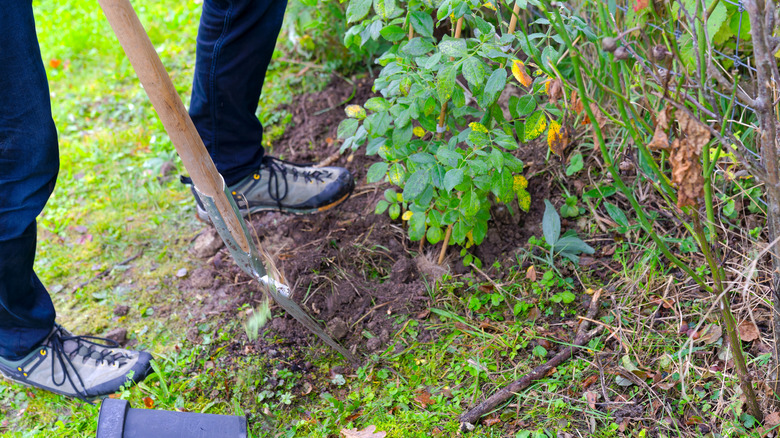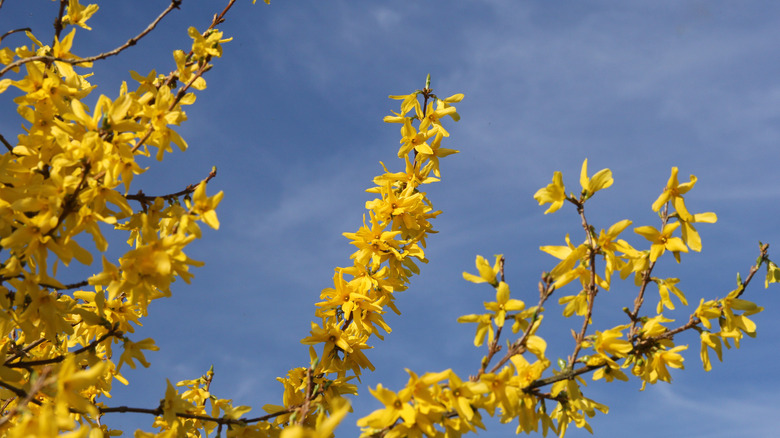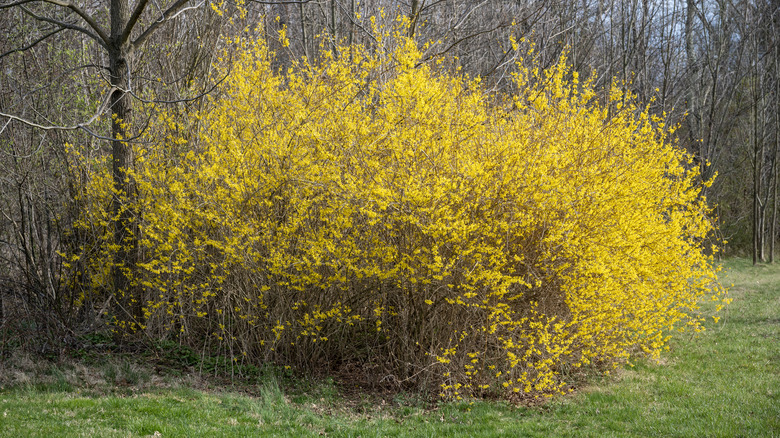Plant This Low-Maintenance Perennial In October For Showstopping Color In Spring
We may receive a commission on purchases made from links.
If you're tired of a colorless yard that takes forever to wake up after a long winter, October is the time to act. Just when most people are cleaning up their garden for the season, you should be planting a shrub that delivers a yellow punch right at the first hint of spring: forsythia (Forsythia spp.). As one of the earliest bloomers, it puts on a display of bright yellow flowers before its leaves even appear. The stunning color is a welcome sign that winter is really over. While the plant might seem like it needs special care, it's easy to grow and take care of forsythia, making it a favorite for both experienced gardeners and newbies.
Depending on the specific variety you grow, these fast-growing shrubs thrive in USDA Hardiness Zones 5 through 8, with some cold-hardy versions able to survive in Zone 4. Taking some time in autumn to plant a forsythia means you're setting yourself up for color in your yard for years to come.
Planting secrets for successful forsythia
You'll want to avoid some mistakes when growing forsythia to get the best results. October has the perfect conditions for planting forsythia because it allows the shrub's root system to get established while the weather cools down. As temperatures begin to drop, the plant will enter a period of dormancy. The soil will retain warmth longer than the air, which encourages the roots to grow without the stress of summer heat or the need to support flower and leaf growth. When you're ready to plant your shrub, choose a location that gets full sun. Planting in too much shade will result in fewer yellow blooms.
Dig a hole that is three times wider than the root ball, but no deeper. Planting in a wide hole allows the roots to spread out into the loosened soil, encouraging it to get established faster. Fill the hole back up with the original soil, patting it gently to remove air pockets. Forsythias are tolerant of various types of soil, including sandy or clay, but they do best when the soil is well draining. Water the newly planted shrub thoroughly right away to help settle the soil around the roots. Continue to keep the soil consistently moist until the ground freezes for the winter.
Simple steps for stunning spring blooms
Forsythia is a low-maintenance shrub. Once it's been in the ground for a season, it becomes relatively drought tolerant and requires little watering except for periods of extended heat or dryness. Typically, you can skip fertilizing established bushes, since they are one of the best flowering shrubs that grow well even in small gardens with less-than-ideal soil. If you feel the need to give it a boost, a light application of granular fertilizer in the early spring can help, but it's rarely necessary.
The most important part of maintaining a forsythia is pruning, and timing is everything. Forsythia flowers bloom on old wood, which means the branches that grew during the previous summer and fall. If you prune the shrub in the fall or winter, you'll be cutting off the very buds that will bloom in the spring. To prevent this, make sure you only prune right after the shrub has finished flowering in the spring. Cut back the oldest, thickest branches right down to the ground to encourage healthy new growth. If this process is done every few years, it will help maintain the shrub's shape and encourage more flowers.


